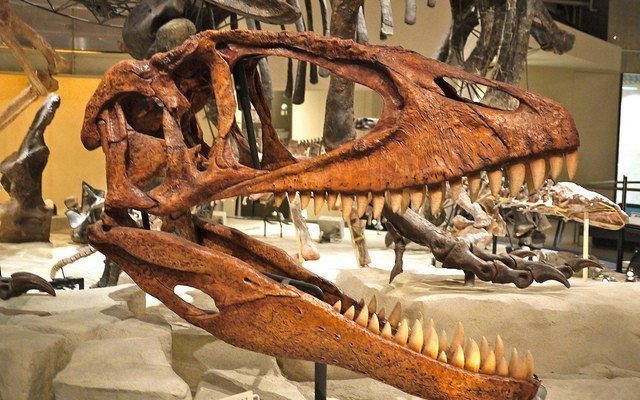
Blogs
Are We In the Middle of Another Mass Extinction?
Species come and go. A virtually inestimable number of living creatures have existed on the Earth since the rise of life. Most of them are not currently in existence; this is the natural order of things. As evolution takes its course, more specialized or adaptable creatures force out less advanced ones. However, there have been several occasions where large numbers of species have disappeared over very short spans of time.
These mass extinctions have tended to be the result of a cataclysmic event that severely disrupted the Earth’s climate and natural processes. The most famous was the killer of the dinosaurs 65 million years ago, most likely the result of a catastrophic asteroid impact near the Yucatan Peninsula. There have been more substantial ones though, such as the Cambrian Extinction about 500 million years ago, which is thought to have eliminated a much larger number of species than the Cretaceous Extinction. Some suggest that the Holocene Era, characterized by the last 10,000 years or so, which saw the rise of human civilization, can be characterized as a mass extinction event in its own right.
The duration of any mass extinction event is a constantly debatable topic. Due to the Signor-Lipps Effect, a paleontological theory addressing the incompleteness of fossil records, it continues to be difficult to determine how long it took for the Cretaceous Extinction to unfold. Initial theories were that it was gradual, but sentiments shifted to one of abruptness due to new discoveries including the impact crater. However, this still does not stamp a specific number of years on the process. “Abrupt” sounds very quick; possibly a few years. Yet in geological time, a few thousand years is very abrupt. Therefore human presence on the Earth is not much more than a tiny speck on a very large timeline, and an ongoing extinction occurring in tandem with the presence of humans might be viewed as an abrupt event.

The fossil of a creature from the Cambrian Period, courtesy of Wilson44691 via Wikipedia.
How significant is the current rate of extinction, and how do we know that it is a result of human activity? Since extinctions are a natural part of life, the Background Extinction Rate endeavors to declare a standard pace at which species come and go, outside of human influence and excluding the outliers that are mass extinctions. However this proposal is largely unreliable in and of itself because it is unknown how many species currently exist on Earth, or have existed at any point in time. Furthermore, it is mathematically impossible then to accurately calculate the relationship between this extinction rate and the rate of extinction we are currently seeing. Some suggest that it is about 100 times larger. Finally, it is fiercely debatable what portion of this increased rate is a result of human activity.
Some extinctions and their causes are easy to identify. The Passenger Pigeon, once clouding the skies with its swarm-like millions and an icon of colonial North America, was ferociously hunted and ultimately classified extinct in 1914. Similarly the Western black rhinoceros, mercilessly poached for its ivory, was just declared three years ago in 2011 by the International Union for Conservation of Nature. The Great Barrier Reef is on the verge of being listed as endangered. Aside from rising ocean temperatures and agricultural runoff, the Australian government has been entertaining a new project intended to bolster its coal industry, which would require dredging in order to expand major ports and dumping the silt in the Great Barrier Reef Marine Park. Fortunately the project is meeting opposition, including the formulation of a long term sustainability plan for the reef which includes monitoring certain species populations and trying to reduce runoff. However the situation is more complicated. A huge number of plant and animal species life there, and the structure of the reef itself is composed of living things. Estimates suggest that it has lost over half its coral in the last 27 years alone. Thus it is not just the recent developments in the agriculture and coal industries that are threatening its survival, but the general patterns and lives we lead.

The Great Barrier Reef, courtesy of Sarah_Ackerman via Wikipedia.
Flora has come under threat as well. The Giant Sequoias of California, some as old as the Trojan War, are hard pressed to survive now that the past fifty years have brought changes to moisture, temperature, and fire patterns. These towering figures require specific patterns of fog in order to acquire the necessary water, and are very delicate when it comes to long-term drought and resulting dryness that can ignite conflagrations. Though they are for the most part not in outright danger, many scientists feel that the ongoing changes to climate might bring them under threat. Furthermore, the state of New Jersey has been grappling with a bill that would allow for commercial logging in state forests and parks. Bulldozing forests is devastating not just to the trees that are cut down, but it destroys the habitats of all the other plants and animal species that reside within. It would promote erosion and storm water runoff, invite invasive species, and detract from our cultural and aesthetic interests.
These are very recent, post-Industrial Revolution cases where extensive record keeping provides a comprehensive understanding of actions and consequences. On the other hand, the extinction of large mammals such as the mastodon is thought to be a result of human migration into North America, but it is unknown whether they were hunted out, human arrival corresponded with changing climate conditions, or a combination. Further, it is difficult to determine to what extent those changes in climate were a result of human activity. This continues to be the main point of controversy: as some naysayers continue to deny climate change outright, it is scientifically challenging to calculate to what extent the changing and erratic weather and temperatures we experience are due to humans versus to what extent they are the natural processes and shifts of the planet, much less what effect those things have on plants and animals.
The extent to which human activity is killing off other living things is debatable. There are clear instances wherein our behavior and economic interests inflict damage, while other issues are more vague and complex. Regardless, as humans are one of the only creatures in Earth’s history capable of so effectively driving other species into extinction, including ourselves, we should take theories of a Holocene Extinction as a dire warning.

The Dodo Bird. Courtesy of BazzaDaRambler via Wikipedia.
—
Franklin R. Halprin (@FHalprin) holds an MA in History & Environmental Politics from Rutgers University where he studied human-environmental relationships and settlement patterns in the nineteenth century Southwest. His research focuses on the influences of social and cultural factors on the development of environmental policy. Contact Frank at staff@LawStreetMedia.com.
Featured image courtesy of [Yoshikazu TAKADA via Flickr]









Comments